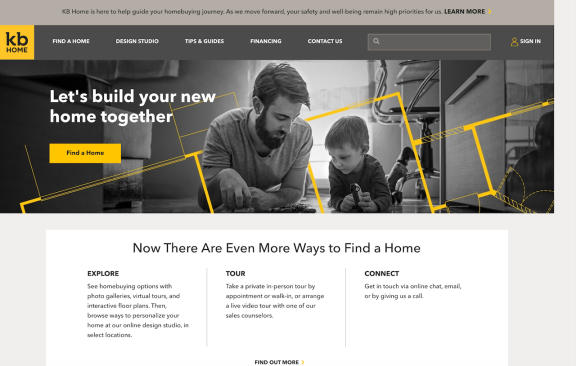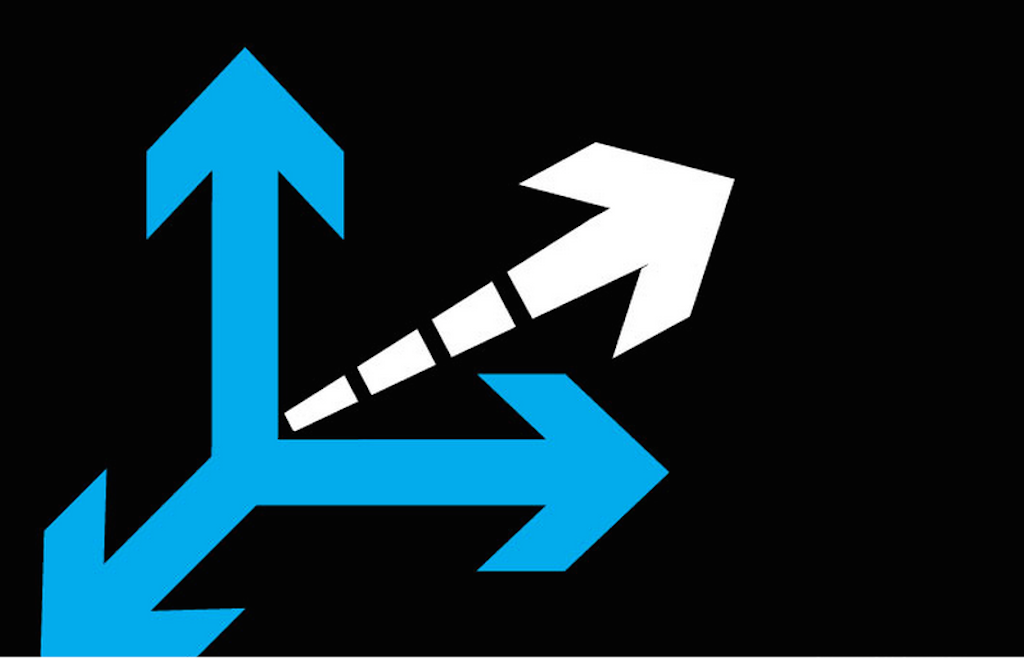Remember when the future was not now?
That nostalgic time seems like just yesterday. Especially so for home builders and their partners, for whom clear lines between now and later often tell who wins and who loses and who washes out of the business game.
Uninvited or not, it’s hard to argue that the future hasn’t barged in on us, an instantaneous menace-pocked impenetrable fog of foreboding.
Once, however, the future cushioned home builders and their partners with time to plan, carving durations–what was, what is, and what will be–into manageable kits of parts. What will be tended–until now–to time-release deltas that separated capital put in place and its ultimate returns, or losses. Across the span of up and down cycles, the future’s nature worked at some remove–distance, 24-hour increments, physical yardsticks from the present forward in space and time into it. It provided at least some types of people an instant, a ground, a window of moments to map scenarios about what could lie ahead, just beyond a horizon, or around a corner of time. To recognize, reckon, appreciate opportunity, risk, threat with a proxy of the advance notice of the imaginable. The pressure it exerted on the present came packaged with “ifs,” hypotheticals, likelihoods, maybes, pathways, options, alternatives, considerations, assumptions, and potential defenses against the most adverse of the possibilities.
The present seemed safely contained, a write-protected bubble, shielded from future time’s editorial imprint or judgment or gravity.
Now? What was to be simply is. Tomorrow? Next week? 2021? The future just arrived, and it did so as if it should have been expected all along. Whether or not we are ready, or whether or not we choose to see its “young, scrappy, and hungry” fullness in our lives, this uninvited guest managed to hack into the code of our present tense, leaving it up to us to decode what it means and why it matters to us today. To learn from it, directly, immediately, without buffers, rather than to use prior knowledge, data, experience to write ourselves into it.
Home building enterprise executives, consider a case in point, your web presence.
We’ve reported here, and here, of the importance and moment of your digital connectors with customers–driven by fear, opportunity, life-stage, work transformation, and financial inducements–to act now, while an array of stars align, on a new-home purchase.
It’s been critical–amid these scary time’s lockdowns, work-from-home immersions, shelter-in-place intrusions, 24-7 family-member needs, and schedules, and health-statuses, not to mention financial-roller-coasters around job and retirement security–to let people know “the lights are on. We’re here. We’ll help you find, finance, and buy. We’ll make it safe; we’ll make it easier; we’ll make it enlightening; we’ll empower you; and we can do it fast and friction-free. We are your safe haven option right now, and we’re ready for you.”
Contactless.
Virtual.
Augmented.
Seamless.
Attach any of these terms to “selling” homes today, as many builders have been in an understandable rush to do, to show customers and prospects strong signs of innovation and technological chops, and the playing field of housing preferences starts to tilt in a builders’ favor.
Still, this language hearkens to magical-thinking based marketing verbiage of yore, that spoke of “revolutionary,” “ultra-modern,” “scientifically-developed” brand promises.
When it comes down to it, digital, data-enabled, virtual, augmented, seamless, click-to-pay types of consumer experiences are the experiences consumers are accustomed to in their lives. Home builders coming around to adopting and tapping the power of technological tools–late in the game as they have–is simply to say they’re emerging from a Dark Ages era into the 2020s.
So, the sooner we get rid of the “contactless,” “virtual,” “augmented,” “data-enabled,” and “seamless” descriptors as value markers in the journey buyers take to find, finance, and take delivery on homes, the better.
In a moment where the future has hacked into the present, all of this today is just selling. Simply selling. Bragging about virtual, contactless, richly-visual, and friction-free digitally-enabled technology is a sign of over-emphasis on what is urgent at the expense of what–in Seth Godin’s terms–is important: your relationship with a human household whose decision-chain, and its potential value to you, stretches well before a conventionally-appreciated “buyer’s journey” and extends boundlessly beyond it. The difference is critical, existential.
As for websites, the mistake for builders is to see them as selling tools, period, in and of themselves. True, they’re a point of contact–an important one–in one of the most valuable relationships imaginable between a marketer and a consumer: the personal investment in household members’ well-being, privacy, safety, connectedness, .

Let’s look, for instance, at KB Home’s elegantly redesigned and newly-powered Website. As Amit Desai, KB Home cmo tells us, three-out-of-four customers say that they “judge company credibility” based on a firm’s website.
“Our vision is to be the most customer-obsessed builder out there, and to make that clear through the simplicity, the empowering function, the personalization opportunity, and our brand message about what makes KB Home special, which is their comfort,” says Desai.
Here’s a quick run-down of the boxes KB designed into the new site:
- Check: improved the home search tools and implemented more user-friendly navigation, making it simpler for shoppers to find a home with the amenities they want in a neighborhood that excites them.
- Check: Enhanced showcase of communities and floorplans — big images, to put essential information at customers’ fingertips.
- Check: Introduced and/or enhanced virtual selling tools:
- Check: Online tools are easier to find, and they allow buyers to view photo galleries, experience virtual home tours, explore interactive floor plans and discover the Design Studio, all from where they are.
- Check: Touring options: Private, in person tour; Walk-ins; Live video tours; Self-guided tours (move-in ready homes)
- Check: On-demand Connect: Online chat; Email; Phone
As Desai observes, “We saw an opportunity to serve as a resource for potential home buyers by developing new, timely and helpful content. Our new Tips & Guides section offers valuable information on a host of topics to help customers through the home buying process, including tips for first time home buyers, benefits of an ENERGY STAR® certified home, what to expect at the Design Studio and a new step-by-step video explaining how buying a home with KB works. ”
That’s all good. In fact, if a home building firm’s website hasn’t started firing on all of these cylinders, it’s likely getting crushed in a COVID-19 market arena.
Still, think about this, and the critically important thing Desai and his team at KB Home learned from their research on customers. Three-quarters of them judge the firm’s credibility based on the site.
Think of something else, embedded here in this just-released data from ATTOM Data Solutions, showing national homeownership tenure trends reaching their highest–longest tenure–point on record.
How do the dots connect?
When buyers–based on the credibility you establish with them via your websites–choose to become your customers these days, they’re signing up to be your customer not just for a transaction in the next several months, but for a relationship over the next eight-plus years.
Here’s what this coupling of data points tells us about the next big, boundless opportunity for home builders–hiding in plain sight in the user experience and back-end functionality of their websites.
- A website can and does ignite trust, and can activate a buyer.
- It’s also the place to ignite, nurture, and deliver on the promise that underneath the skin of your brand name, you actually care.
- It’s also the place where you–as a team of people who serve as touch points in your organization to your customers–listen and learn at least as much as you sell and educate and activate.
The final biggest business opportunity that can grow directly from tapping into the under- or un-leveraged possibilities of your web presence goes back to that eight-year-plus run that you’re very likely to possibly engage with buyers of your homes in your communities.
Why builders make a business model of transacting on the biggest-ticket item most people acquire in their lives, and then do everything they can to put those self-same customers into their tail-lights is one of new residential construction’s biggest enigmas.
Especially when tech giants–Amazon, Apple, Facebook, Google, and Microsoft—-are doing everything they can to create relationships with those customers that turn into unicorn and moonshot new enterprises.
The website is a conversation about value–yours and your customers. Help your customer become who and what they want to become, and your firm is doing more than assembling more and more expensive materials and labor. You’re generating renewable, expanding, ever-more profitable value.
The Holy Grail here is the consumer–his, her, their–behavior. When you engage, develop trust, show you care, and continue to relate to a household in their living experience–you’re in a potential gold mine.



